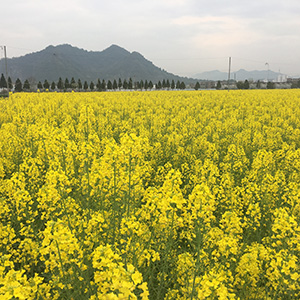The optimisation of rapeseed yield and growth duration through adaptive crop management in climate change: evidence from China

Accepted: 28 October 2022
Appendix: 47
HTML: 80
All claims expressed in this article are solely those of the authors and do not necessarily represent those of their affiliated organizations, or those of the publisher, the editors and the reviewers. Any product that may be evaluated in this article or claim that may be made by its manufacturer is not guaranteed or endorsed by the publisher.
Crop yield is influenced by plant growth and development; both are affected by climatic variables and crop management practices. Therefore, understanding the effects of climate variables and management practices on rapeseed (Brassica napus L.) yield and growth duration (GD) is essential for developing strategies for agricultural systems based on changing climatic conditions. Thus, we quantified the respective contributions of climate change and crop management to rapeseed yield and GD between 2008 and 2019 in China using a first-difference multivariate regression model. Our results showed that: i) based on observed rapeseed yield and phenological data, the average planting date was delayed by –1.1 to 9.5 days decade–1, the average maturity date was advanced by 4.4 to 9.9 days decade–1, the average GD was shortened by 6.0 to 19.6 days decade–1 and the average yield increased by 12.82 to 61.5 kg ha–1 year–1; ii) the relative contributions of climate change and crop management to winter rapeseed yield were changed from –20% to +39% and from +61% to +80%, respectively, and the relative contributions to GD were changed from –10% to +15% and from –85% to +97%, respectively; iii) among the three climatic factors considered in this study, the climatic factor that caused the most remarkable change in winter rapeseed yield and GD was different in different regions. Overall, compared with cumulative temperature, cumulative sunshine hours may be the most critical climate factor limiting rapeseed yield in the Yangtze River Basin, especially in the upper reaches of the Yangtze River. Our results suggest that stakeholders select highyielding cultivars to optimise crop management and adaptation strategies in different agroecological zones.
Highlights
- The growth duration of winter rapeseed was shortened, and the yield increased in most stations.
- Crop management to changes in GD and yield of winter rapeseed was greater than the impact of climate change.
- Cumulative sunshine hours may be the most critical climate factor limiting rapeseed yield in the Yangtze River Basin.
How to Cite

This work is licensed under a Creative Commons Attribution-NonCommercial 4.0 International License.
PAGEPress has chosen to apply the Creative Commons Attribution NonCommercial 4.0 International License (CC BY-NC 4.0) to all manuscripts to be published.

 https://doi.org/10.4081/ija.2022.2104
https://doi.org/10.4081/ija.2022.2104



